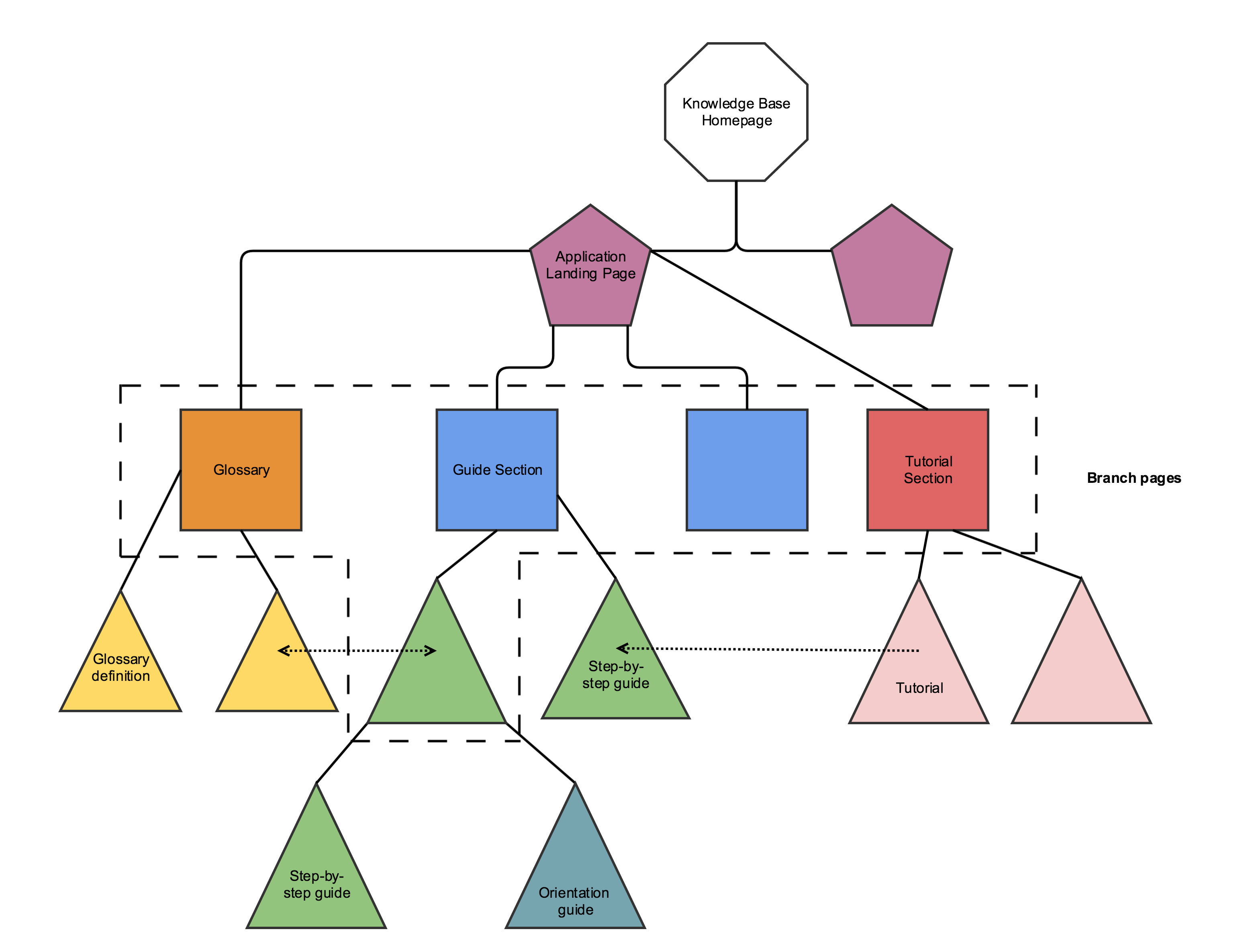Overview
The Knowledge Base (wiki.shanti.virginia.edu) is a wiki that contains guides to using applications within UVa, with particular attention to tools developed by SHANTI. Readers can edit and comment on the Knowledge Base, but a team of writers develops the content model and writes a set of initial guides for each application.
Knowledge Base Components
The Knowledge Base is broken into a series of application guides. Each application guide begins with a landing page, which outlines the guide’s content. Within the application, there are at least three broad categories: the glossary, guide section(s), and tutorial section. There may be as many guide sections as necessary to organize the guide’s content.
Finally, each section contains a series of short pages. These pages are the smallest unit of the Knowledge Base. The type of pages within the section depend on the section's purpose. The glossary contains glossary definitions, the tutorial section contains tutorials, and the guide sections include step-by-step guides and orientation guides. Pages can communicate across sections through links or imported content.
The diagram below illustrates this content model.
In this diagram, each shape represents a page in the Knowledge Base. Pages at the same level in the hierarchy share the same shape. Dotted arrows represent communication between pages that aren’t hierarchy-based, either through links or imported pages.
Note that certain pages on the diagram are surrounded by a dotted box. These are branch pages -- pages that don’t contain substantial content, but that group pages lower in the hierarchy together with a table of contents. Branch pages are usually displayed directly on the landing page. Sometimes, however, step-by-step guides within a section will be grouped under one branch page. This should only happen if the guide section would otherwise become long and unwieldy.
What does this tree-like hierarchy actually look like in the Knowledge Base? Here is an example from the sidebar (note that not all pages are expanded):
Level 1
Application landing pages: Artstor Digital Library, Blackboard Collaborate, Conflience Wiki, InqScribe Transcription Software, JUXTA
Level 2
Guide sections (expanded only): Start in InqScribe, Transcription, InqScribe in Other Applications
Tutorial section: Inqscribe Tutorials
Glossary: InqScribe Glossary
Lower Levels
Step-by-step guides: Install InqScribe, Obtain a Permanent License, Obtain a Trial License
Orientation guides: Explore the Interface, Learn More About InqScribe
Tutorials: Transcribe Tibetan Language
Glossary definitions: Balance, Media (InqScribe), Timecode, User License
Branch Pages (any level)
Start in InqScribe, Transcription, InqScribe in Other Applications, Obtain a User License, InqScribe Glossary, InqScribe Tutorials
Mandala: A Special Case
Mandala is a suite of tools developed at SHANTI. Mandala helps scholars organize and share their content. Tools include text applications, media applications, visualization applications, and others. Since the broader Mandala framework supports many applications, the larger Mandala application landing page contains many smaller application landing pages, with their own guides, glossaries, and tutorials.

